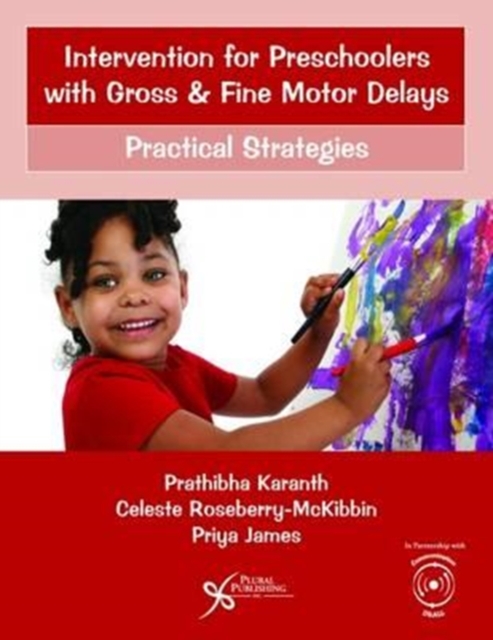
Intervention for Preschoolers with Gross and Fine Motor Delays : Practical Strategies Paperback / softback
by Prathibha Karanth, Celeste Roseberry-McKibbin
Paperback / softback
Description
"Intervention for Preschoolers with Gross and Fine Motor Delays: Practical Strategies" was created out of concern for the increasing number of children identified with developmental language disorders, including those with autism spectrum disorder, and the lack of adequate resources for them.
This manual addresses gross and fine motor skills, and activities of daily living for preschoolers between the ages of 3-6 years old.
Children with developmental disabilities often have difficulties in or uneven development of gross and fine motor skills.
These delays have a related effect on the acquisition of daily life skills.
The activities in this manual for building gross motor, fine motor, and ADL skills encourage sensory stimulation.
Sensory integration skills, or a child's ability to integrate sensory stimulation from her environment, are automatically targeted in the activities.
The activities can be used in a wide variety of settings.
They can be used in the therapy rooms of speech-language pathologists (SLPs), preschool classrooms, daycare settings, and children's homes.The activities are especially ideal for SLPs who conduct home visits to provide intervention in children's natural, daily settings. This manual is intended to guide the therapist or caregiver in selecting the target skills that a child should be trained in.
The lesson plans outline the activities that need to be undertaken to elicit specific responses from children and establish a range of developmental skills.
The simple lesson plans are intended to get the therapist or caregiver started on the process of stimulating the child in each of the domains that he or she needs help in, at their current level of functioning.
The first section of this manual addresses the basic gross motor skills that children acquire.
For instance, during the ages of 3 to 6 years the child learns to hop, swing, climb, cycle, throw and catch with increasing independence.
The second section deals with fine motor skill development.
The lesson plans included here sensitize the therapist or caregiver to the basic fine motor skills that a child needs to learn at this stage.
The third section addresses mastering the activities of daily living.The lesson plans that are included in this section are designed to help the child progressively take care of basic needs with increasing independence.Also included are "Tech Tips" with recommended YouTube videos, websites, Pinterest sites, and other online resources. These online resources provide the therapist or caregiver with excellent ideas for products and practical intervention strategies that can be used for a variety of purposes when serving young children with special needs.
Information
-
Out of Stock - We are unable to provide an estimated availability date for this product
- Format:Paperback / softback
- Pages:165 pages
- Publisher:Plural Publishing Inc
- Publication Date:01/05/2017
- Category:
- ISBN:9781597569767
Information
-
Out of Stock - We are unable to provide an estimated availability date for this product
- Format:Paperback / softback
- Pages:165 pages
- Publisher:Plural Publishing Inc
- Publication Date:01/05/2017
- Category:
- ISBN:9781597569767






